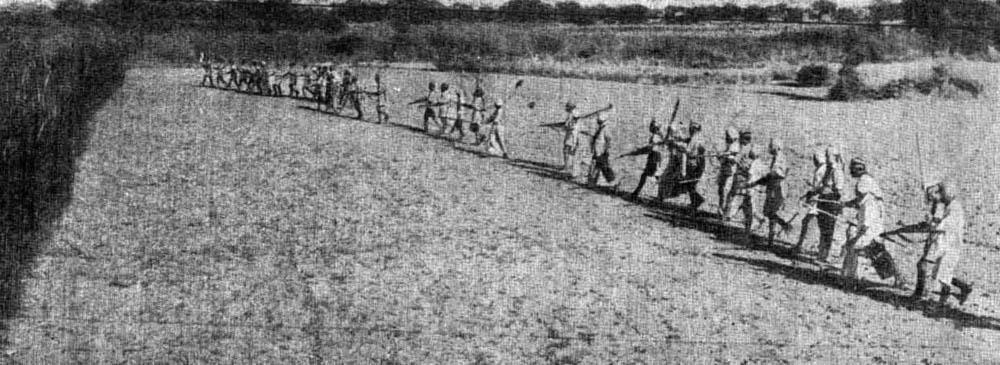According to ACdre Sajjad Haider's book, that was the eventual idea of the offensive in the area.
A more recent analysis by ACdre Tufail gives a less dramatic but equally important marks to the performance
From
Aeronaut: Air Support in Thar – 1971 War
Further south, Indian 11 Division was tasked to capture Naya Chor by launching an offensive along Monabao-Khokhrapar-Naya Chor axis with the help of two brigades and,
subsequently to develop operations into the green belt of Sindh. Additionally, the division’s third brigade was to outflank and capture Chachro along the Gadra-Khinsar-Chachro axis. Apparently no link-up of the two widely divergent incursions was planned and, neither complemented the other. The Indians had envisaged that a threat to towns like Mirpurkhas and Umarkot would force Pakistan’s II Corps to detach its elements for the assistance of 18 Division’s single brigade in this sector, thus depleting the former’s offensive potential.
As the two Indian brigades advanced towards Naya Chor on the night of 4 December, they met little resistance at first. The disrupted rail link between Monabao and Khokhrapar was repaired and, it was hoped that a regular logistics supply chain would hasten progress of the onslaught. The rail connection, which had been in disuse for years, had many more snags than expected. The vulnerable rail link proved to be the very bane of the Indian brigades as Pakistan Air Force swung into action and started a concerted day and night interdiction campaign that precipitated the ‘overstretch’ which the
Official History of 1971 Indo-Pak War much bemoans [4].
......
The rapid Indian push towards Naya Chor had all the portends of a grave situation developing and, immediate air support had to be provided to ward off the threat. The Base Commander at Masroor, Air Commodore Nazir Latif, along with the OC of No 32 Wing, Group Captain Wiqar Azim responded swiftly and decided to throw in everything the Base could muster. Composite missions, including different types of aircraft, were ingeniously flown. The OC Wing and two of his Squadron Commanders, Wing Commander Shaikh Saleem (No 19 Squadron) and Wing Commander Asghar Randhawa (No 2 Squadron) were at the forefront of this air action and led many missions themselves. Many interdiction and armed reconnaissance missions targeted trains laden with fuel and ammunition along the Khokhrapar-Naya Chor railway line. Tanks and vehicles exposed in the open also turned out to be lucrative targets and, in the surprising absence of air opposition, multiple attacks were carried out without much trouble.
....................
In all, 175 sorties (including 24 night sorties by B-57, T-33 and even C-130) were flown in support of 18 Division in Chor, Ramgarh and Kutch Sectors; this formed one quarter of the total air support effort provided by PAF during the war [7]. In addition, 40 combat air patrol sorties were flown by F-86E and F-104 to cover the vital troop and armour reinforcements arriving by train from the central zone to Naya Chor. The inability of the IAF to interfere with the reinforcements only underscores the effectiveness of PAF’s air umbrella.
Unlike the PAF’s air support in the northern battle zones, where as many as one-third of the air support sorties were unsuccessful (mainly because the enemy tanks and vehicles could not be sighted in the natural camouflage of Punjab), the success rate in Thar was nearly 100% as the desert offered the enemy no sanctuary. A total of 20 tanks, 63 vehicles, 5 trains, 3 bulk fuel stores and an ammunition dump were claimed by the pilots, according to PAF’s official history [8]. During the course of the tactical air support campaign by the PAF, no aircraft were lost to ground fire. IAF, however, lost three Uttarlai-based HF-24s to vigilant Pak Army AAA while on air support missions in Naya Chor area [9].










